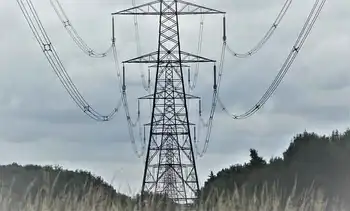Thieves sell stolen solar panels on Internet
By New York Times
CSA Z463 Electrical Maintenance -
Our customized live online or in‑person group training can be delivered to your staff at your location.

- Live Online
- 6 hours Instructor-led
- Group Training Available
Just ask Glenda Hoffman, whose fury has not abated since 16 solar panels vanished from her roof in this sun-baked town in three separate burglaries in May, sometimes as she slept. She is ready if the criminals turn up again.
“I have a shotgun right next to the bed and a .22 under my pillow,” Ms. Hoffman said.
Police departments in California — the biggest market for solar power, with more than 33,000 installations — are seeing a rash of such burglaries, though nobody compiles overall statistics.
Investigators do not believe the thieves are acting out of concern for their carbon footprints. Rather, authorities assume that many panels make their way to unwitting homeowners, sometimes via the Internet.
Last November, someone tried to sell solar panels stolen from a toll road in Newport Beach for $100 each on eBay. Detectives from the local police department entered the bidding and won the panels, which were worth nearly $1,500 apiece, according to Sgt. Evan Sailor, a Newport Beach police spokesman.
When Nathan Tyrone Mitchell, a resident of Santa Monica, showed up to hand over the panels, the police greeted him with handcuffs.
Mr. Mitchell, who was charged with possession of stolen property, has pleaded not guilty. His lawyer, Charles Stoddard, said that his client had bought the panels from someone on Craigslist and then tried to resell them on eBay for a profit. “Our contention is that Mr. Mitchell is just an innocent purchaser who kind of got caught up in this thing,” Mr. Stoddard said.
In Contra Costa County, detectives accustomed to handling thefts of copper began to notice solar panels going missing in the last six months, according to Jimmy Lee, a spokesman for the county sheriffÂ’s office.
This summer, an officer on patrol became suspicious when he spotted a man trying to sell solar panels to a homebuilder who had advertised on Craigslist that he was seeking panels. The officer confiscated the panels and, after detectives found that they matched panels stolen from a school, a California man was charged. Mr. Lee says that law enforcement agencies are investigating about a half-dozen other solar-panel thefts in his area.
“We were surprised and kind of caught off guard” by the solar thefts, said Mr. Lee, who recommends people engrave their driver’s license numbers onto their panels for better identification.
For Tom McCalmont, president of Regrid Power, a solar installation business near San Jose, the problem hit home in late June. His own headquarters was struck by thieves, who took more than $30,000 worth of panels from the roof.
The panels were disassembled expertly, he said, leading him to suspect that someone in the solar industry had done it. He urges clients to install video cameras and alarms for their solar arrays, and likens his own revamped security system to Fort Knox.
“This is the crime of the future,” Mr. McCalmont said.
After suffering a solar theft, some victims find unusual ways to protect their property. Ms. Hoffman, of Desert Hot Springs, could not sleep for several weeks during the string of thefts from her roof.
One night, she waited beside a nearby building and watched her house in an attempt to catch the thieves, causing a suspicious neighbor to call the police. She vows that if she ever catches the culprits, “they’re not going to leave walking” — especially if she feels threatened.
So far, with the losses still modest, homeownersÂ’ insurance is processing the claims with little resistance. Ms. HoffmanÂ’s insurer, State Farm, is paying $95,000 to replace her entire system. She plans to install an alarm, and possibly a video camera.
Not far from Ms. Hoffman, in the town of Palm Desert, Jim and Shayna Powell were devastated after thieves took 19 of their solar panels in June, causing their electricity bill to shoot from $3 to $300 just when they needed air-conditioning the most. “Of all the times of year to steal the panels,” Mr. Powell said in frustration.
Beyond California, solar-power markets are comparatively small, so thefts are still rare — but they are spreading. In the last 18 months, Oregon’s highway department has lost a few panels used to power portable traffic message boards.
In Minnesota, the Sauk River Watershed District has lost at least eight small panels, worth $250 each, in the last few years, according to Melissa Roelike, who coordinates the water quality monitoring program there.
In response, the district has taken steps to protect the panels, including putting them in trees and atop poles. Thieves promptly stole one such panel.
“Obviously, hoisting them 20 feet in the air on a metal pipe does not work,” Ms. Roelike said.
In Europe, where the solar industry is well-established, thievery is entrenched, and measures to ward it off have become standard, including alarm systems and hard-to-unscrew panels.
But in the United States, installers are just coming to grips with the need for alarms, video cameras and indelible engraving of serial numbers. Some people fancy simpler solutions.
Ken Martin Jr. lost 58 panels, which will cost $75,000 to replace, this spring from the roof of a half-empty office building in Santa Rosa, Calif., that he owns. He is considering slapping paint on some parts of his remaining panels — bright pink paint.
“At least if someone comes across them and they’re painted, they’ll know that’s my color,” he said.











